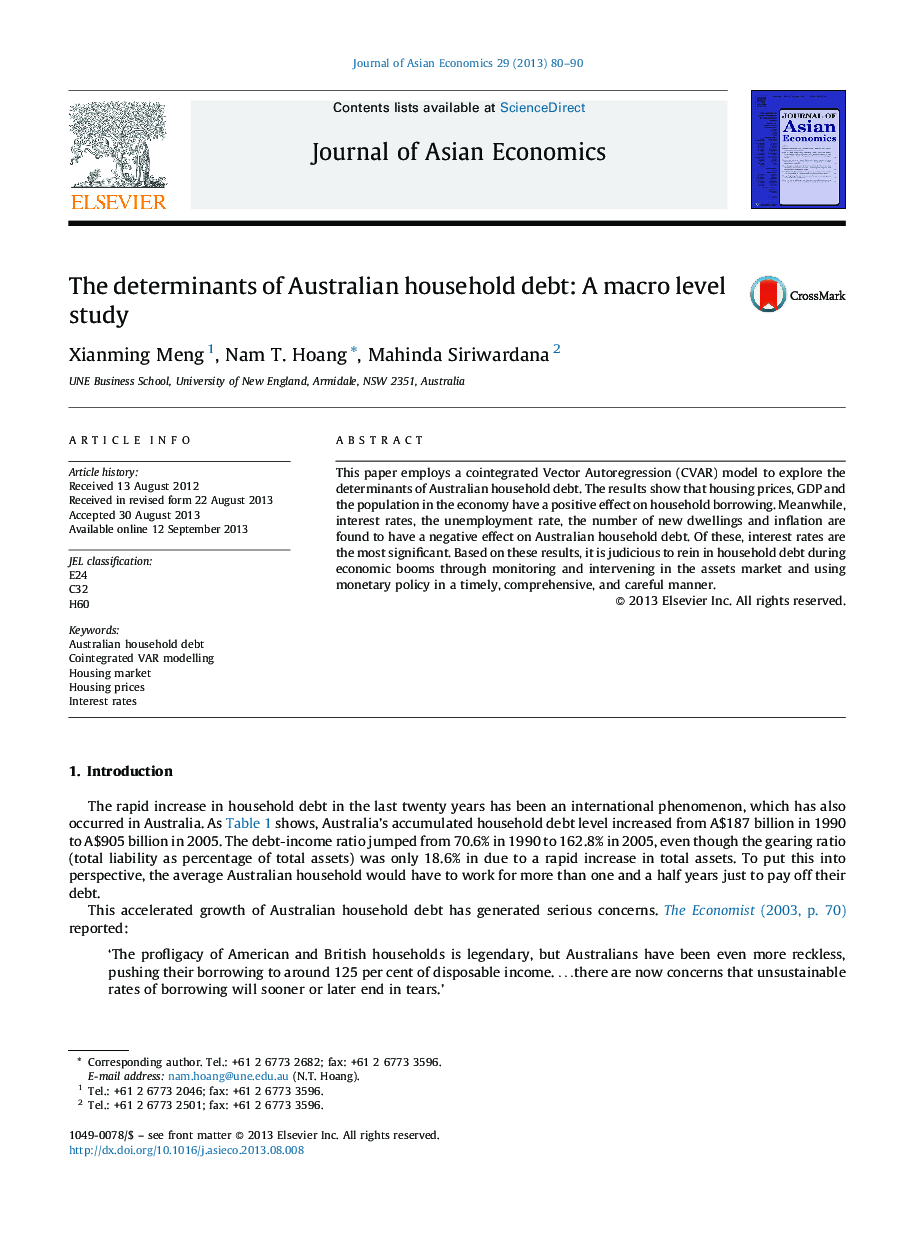| Article ID | Journal | Published Year | Pages | File Type |
|---|---|---|---|---|
| 5087368 | Journal of Asian Economics | 2013 | 11 Pages |
Abstract
This paper employs a cointegrated Vector Autoregression (CVAR) model to explore the determinants of Australian household debt. The results show that housing prices, GDP and the population in the economy have a positive effect on household borrowing. Meanwhile, interest rates, the unemployment rate, the number of new dwellings and inflation are found to have a negative effect on Australian household debt. Of these, interest rates are the most significant. Based on these results, it is judicious to rein in household debt during economic booms through monitoring and intervening in the assets market and using monetary policy in a timely, comprehensive, and careful manner.
Related Topics
Social Sciences and Humanities
Economics, Econometrics and Finance
Economics and Econometrics
Authors
Xianming Meng, Nam T. Hoang, Mahinda Siriwardana,
